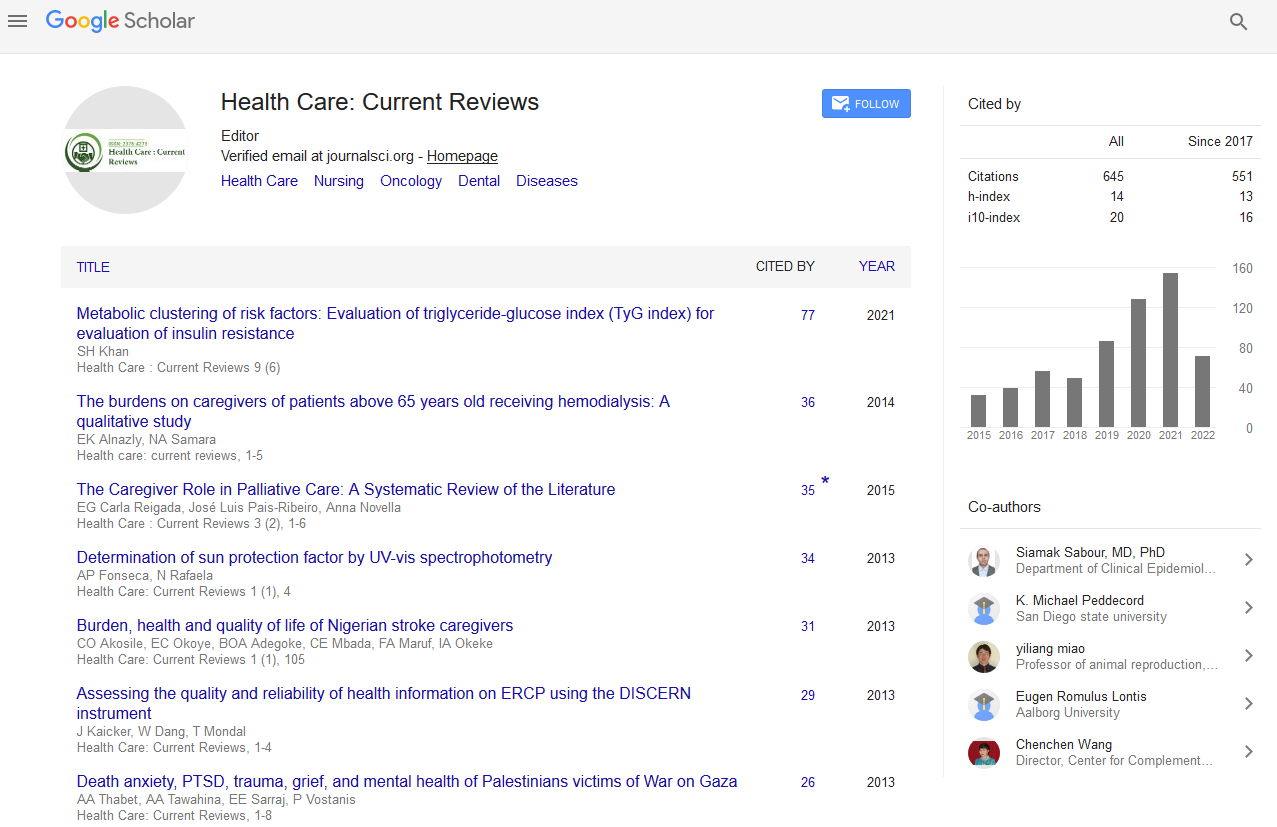PMC/PubMed Indexed Articles
Indexed In
- Open J Gate
- Academic Keys
- RefSeek
- Hamdard University
- EBSCO A-Z
- Publons
- Geneva Foundation for Medical Education and Research
- Google Scholar
Useful Links
Share This Page
Journal Flyer

Open Access Journals
- Agri and Aquaculture
- Biochemistry
- Bioinformatics & Systems Biology
- Business & Management
- Chemistry
- Clinical Sciences
- Engineering
- Food & Nutrition
- General Science
- Genetics & Molecular Biology
- Immunology & Microbiology
- Medical Sciences
- Neuroscience & Psychology
- Nursing & Health Care
- Pharmaceutical Sciences
Physical and pharmacological restraints in geriatric and gerontology services and centers
Euro Health Care and Fitness Summit
September 01-03, 2015 Valencia, Spain
Primitivo Ramos Cordero
General Sociedad Española De Geriatría y Gerontología, Spain
Posters-Accepted Abstracts: Health Care: Current Reviews
Abstract:
Physical and pharmacological restraints are a controversial issue in the context of geriatric care due to their moral, ethical, social and legal repercussions and despite this fact, no specific legislation exists at a national level. The use of restraints is being questioned with growing frequency, as there are studies that demonstrate that restraints do not reduce the number of falls or their consequences, but rather can increase them, cause complications, injuries and potentially fatal accidents. Restraints are not always used rationally, despite compromising a fundamental human right, that is, freedom, protected in the Constitution, as well as values and principles, such as dignity and personal self-esteem. There are centers where restraints are applied to more than 50% of patients, and in some cases without the consent of their legal representatives. On some occasions, restraints are used for attaining organizational or environmental objectives, such as complying with tight schedules and for reducing or avoiding the supervision of patients who walk erratically and, at times, are used indefinitely. Even greater confusion exists with respect to the emerging concept of chemical or pharmacological restraints, since no conceptual framework exists based on scientific evidence, and with sufficient consensus for guiding healthcare workers. In this context, the Sociedad Española de Geriatría y Gerontología (SEGG �?? Spanish Geriatrics and Gerontology Society), aware of the significance and transcendence of the issue, and in an attempt to preserve and guarantee maximum freedom, dignity and self-esteem, on the one hand, and to ensure the maximum integrity and legal certainty of the persons cared for in geriatric and gerontology services and centers, on the other, decided to create an interdisciplinary committee on restraints made up by members from different disciplines and members of SEGG Working groups or committees, external health care workers, groups, organizations, and associations, who are experts in restraints, as well as the main anti-restraint movements. An outcome of this decision is the Consensus document on physical and pharmacological restraints, together with the Consensus on physical and pharmacological restraints, published by the SEGG, which should signify a qualitative leap forward in care for the elderly and serving as a best practice guide for healthcare workers.
Biography :
Email: primitivo.ramos@segg.es


